We’ve had a run of Yarises (Yari?) lately. In late 2020, Kate did a comparison review of the Toyota Yaris ZR Hybrid Hatch vs. the Suzuki Swift Hybrid. The Yaris won that race, even though the premium of $3,000 over the non-hybrid was a lot more than the $500 for the Swift Hybrid. Over Christmas, Toyota loaned us a top-spec (ZR) Yaris hatch for six weeks to see how the non-hybrid model stacks up. You can read that review here.

And now, we’ve got the top-spec Yaris Cross Limited Hybrid for a week to see how that car compares. Like the Yaris Hatch, Toyota says this is a fun car, to the point of showing donuts coming out of the back of the car on their website.
Is it fun? Will the exhaust spew out donuts? We spent a week with the Yaris Cross Limited Hybrid to find out.
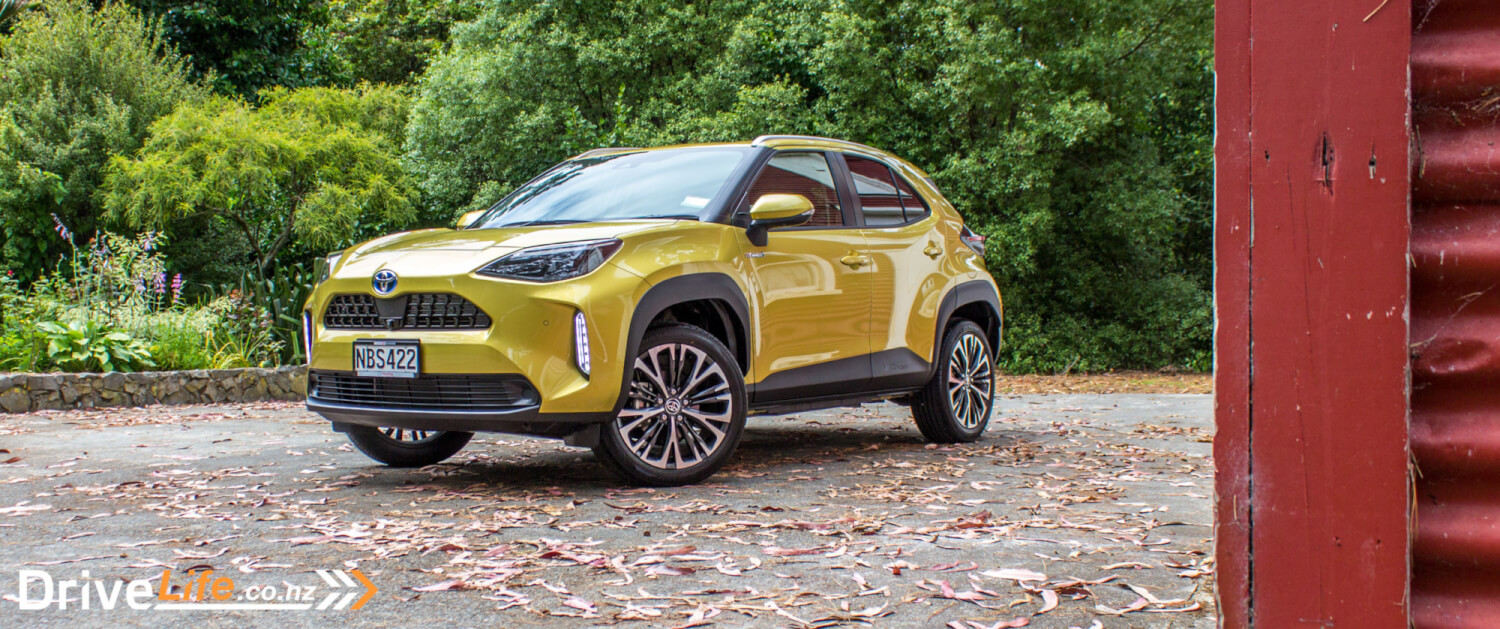
What’s In The 2020 Toyota Yaris Cross Range?
Unlike the simple, Toyota naming convention for the Hatch, the Yaris Cross changes it up. There’s still the base GX model ($29,990), then the GX Hybrid ($33,990), and instead of a ZR, the top-spec is the Yaris Cross Limited Hybrid ($38,990, tested). You can pay another $500 to get the Limited version in two-tone paint. Touching forty grand for a small SUV is really getting up there, so hopefully Toyota have specced this car up to get some value for money.
All models are front-wheel-drive only, and both hybrid and non-hybrid run the same 1.5-litre, 3-cylinder petrol engine putting out 88kW of power in the base model, and a lower 67kW in the hybrid. There’s more torque in the non-hybrid too, 145Nm for the base, and 120Nm in the hybrid but the hybrid system does take maximum power to 85kW.
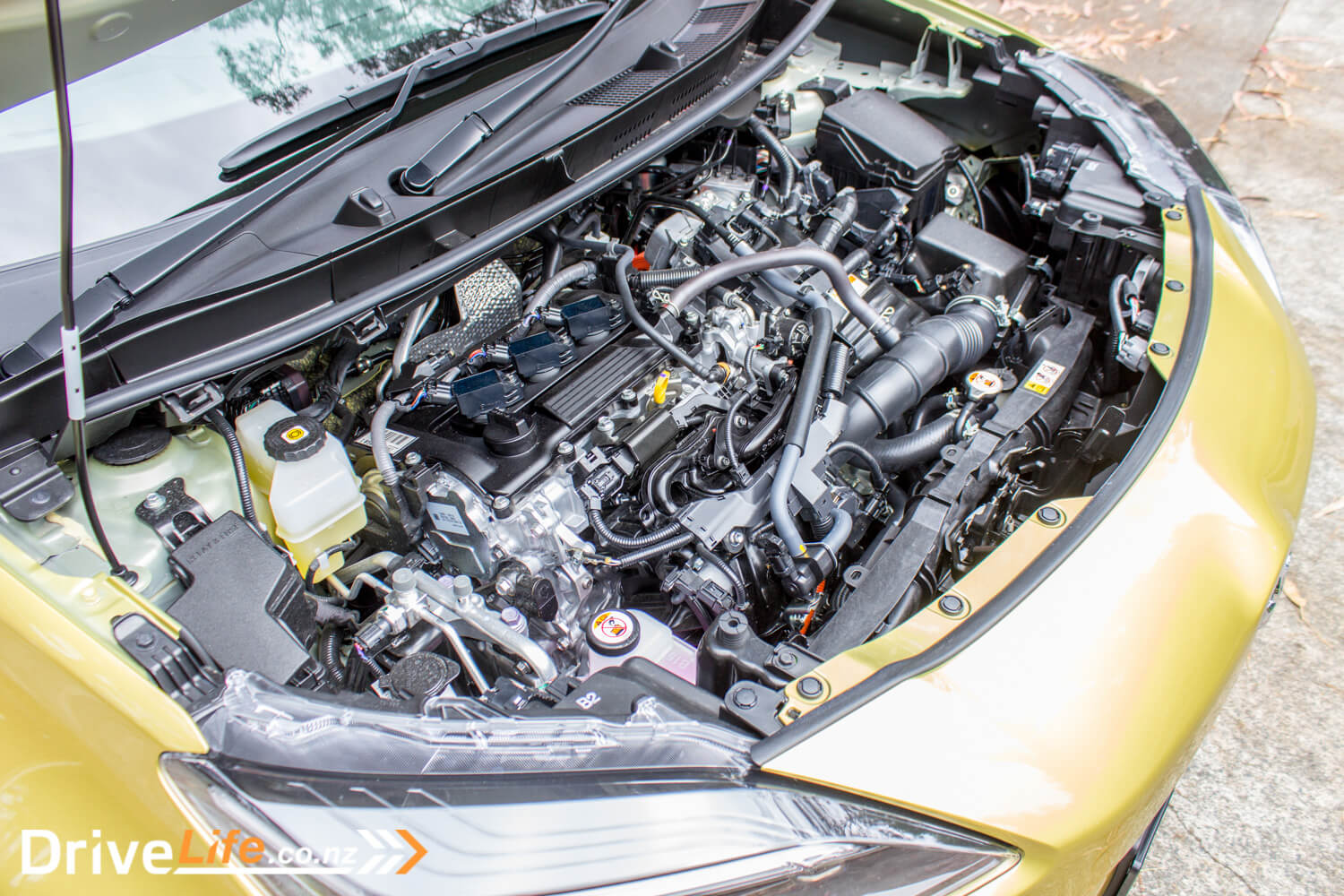
The non-hybrid model also has trailer sway control where the hybrid does not.
Another difference is that the hybrid has climate AC where the non-hybrid does not, and also the hybrid is 50Kg heavier. That’s it for the differences between the two – the specs and features for both GX models is the same otherwise.
That means there’s 6-speaker audio, a 7” touchscreen, Apple Carplay and Android Auto functionality, an electric tailgate with kick sensor, Toyota’s Safety Sense package (including adaptive cruise control, Lane Tracing Assist, Lane Centering, automatic high beams, Road Sign Assist, blind spot monitoring, hill start assist, Brake Assist, and other safety features), 16” alloy wheels, 8 airbags, reversing camera with dynamic guidelines, front and rear parking sensors, LED tailights, lastly heated and automatic folding exterior mirrors.
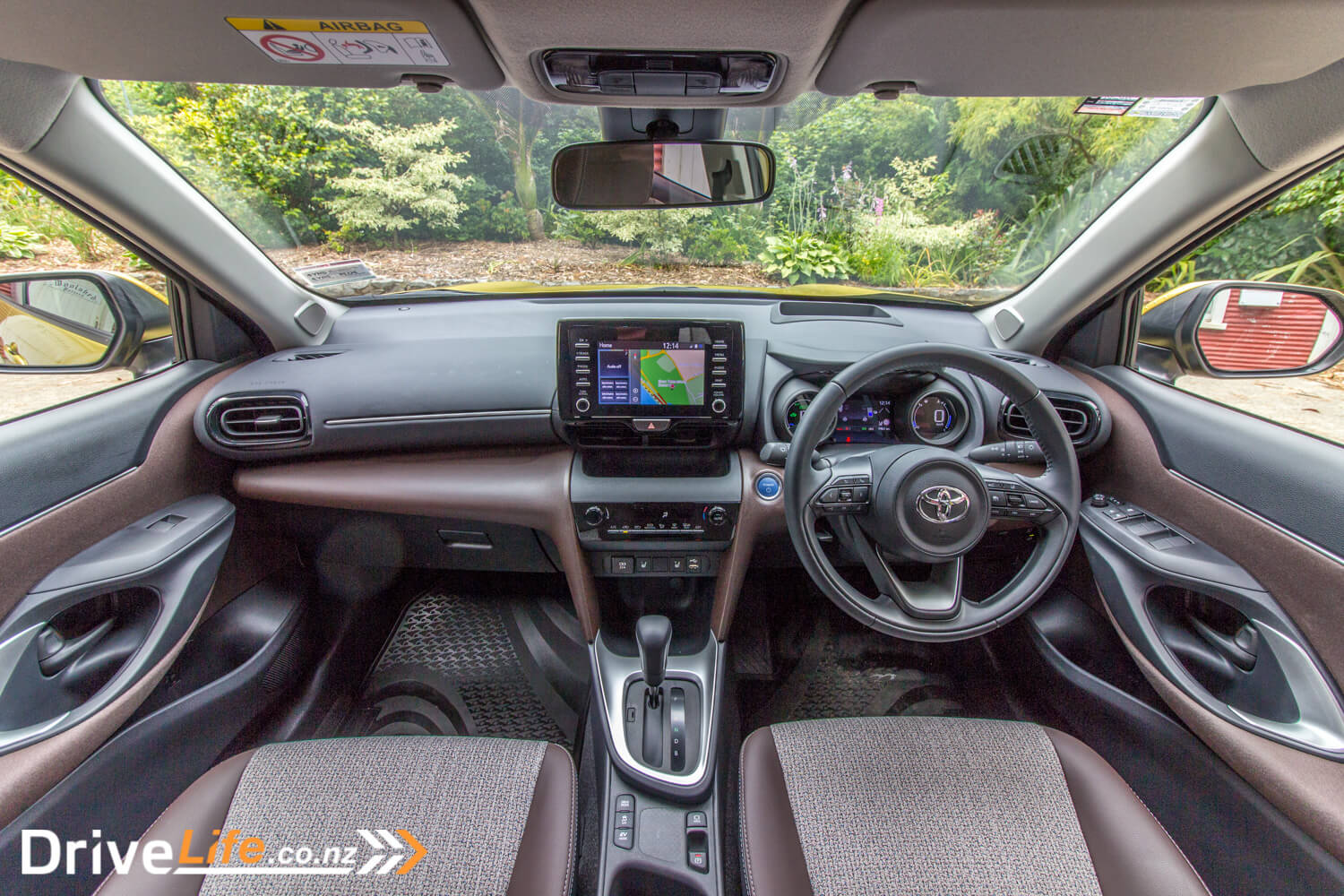
Up-speccing to the Limited version adds ‘premium’ tweed-like fabric inserts and synthetic leather seat material, power-adjustable driver’s seat and heated front seats. There’s also a leather steering wheel and gear lever knob, rear privacy glass, an additional USB port, heads-up display, SatNav with SUNA traffic alerts, keyless entry and start, automatic LED headlights, LED DRLs, and LED indicators.
You can choose from seven colours for your Yaris Cross; Crystal Pearl, Tensile Silver, Ink, Ruby, Golden Ore, Arctic Dawn, or Blue Crush.
You can read more about the Toyota Yaris Cross range on Toyota New Zealand’s website.

First Impressions Of The 2020 Toyota Yaris Cross Limited Hybrid
It’s a fairly standard formula these days; take a small car, make it taller and call it a crossover. What surprised me the most about the Yaris Cross is how much it isn’t like the Yaris Hatch. For example, the front is completely different. While the Hatch is all angular and straight lines, the Cross is all roundy and smooth. They really could not be more different.
Of course, the side of the car is changed as well, with those sexy but impractical rear doors of the hatch gone, in favour of more ‘normal’ doors. They still cut back at a sharp angle, but definitely more practical than the hatch’s rear doors. Being a small crossover, there’s the almost obligatory plastic wheel arch covers to make it look rougher and tougher.
In fact, the rear of the Cross is the most familiar to the hatch. The taillights look similar, it’s got the same roof spoiler, and still looks great from the rear.
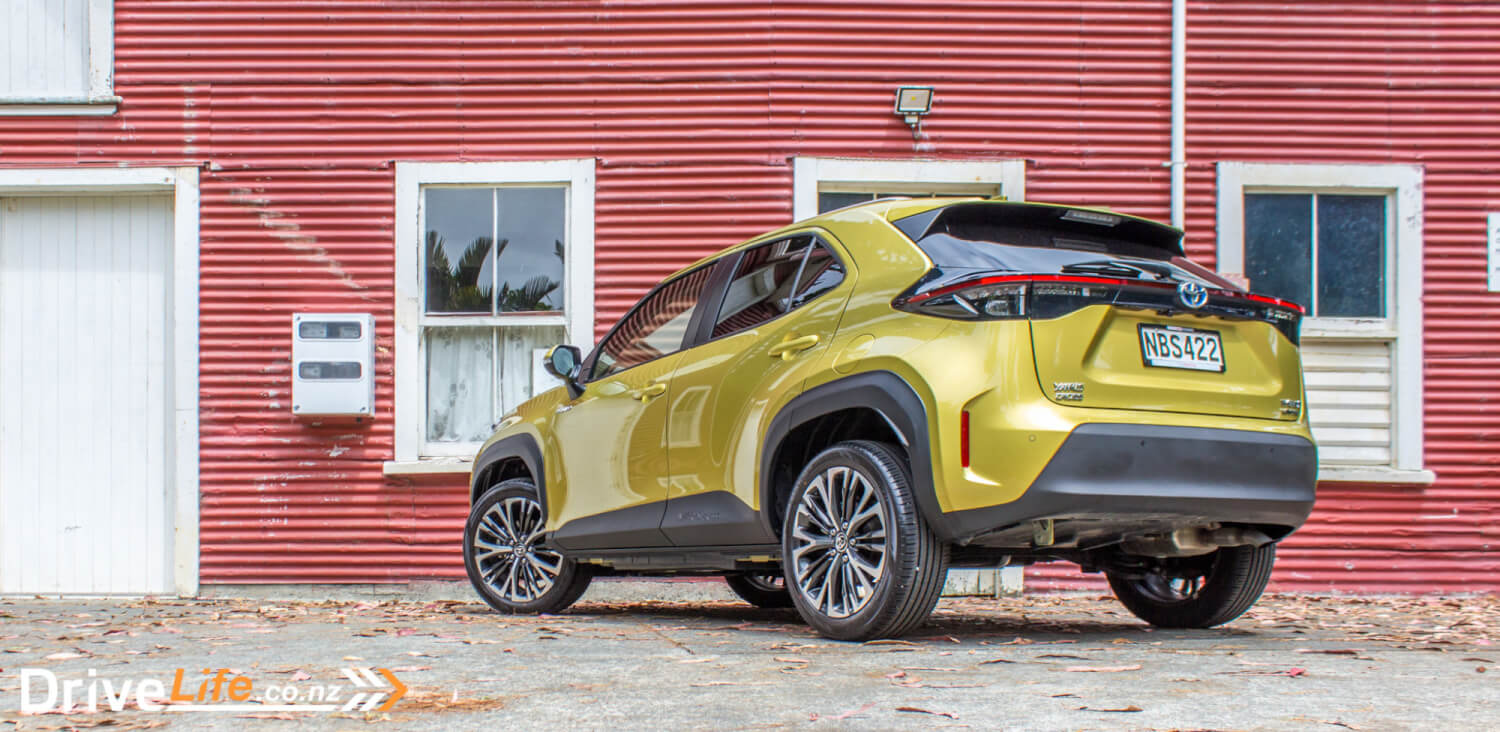
I’ve said it before but I’m going to say it again; I still can’t believe how manufacturers can take something so fixed in shape like a wheel, and yet every model change give us a new look, and more often than not, multiple looks. The wheels on the Cross are certainly different to the hatch, and they look excellent.
Overall, first impressions of the Yaris Cross are good, especially when finished in the Golden Ore of our test car. I like it in the flesh a lot more than I thought I would.
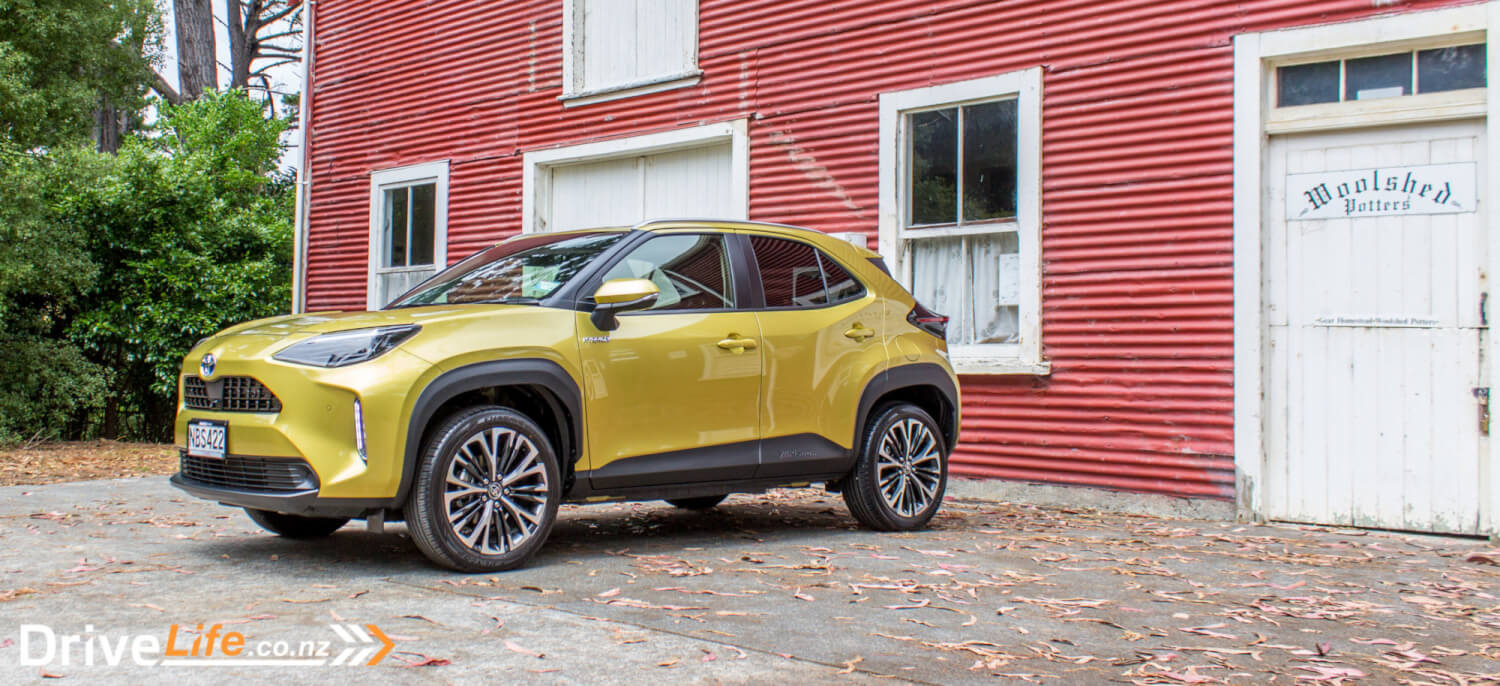
What’s The Interior Like On A 2020 Toyota Yaris Cross Limited Hybrid?
It was a bit of a shock at first. While I think I’m one of the few that actually likes a brown interior, it has to be done right. Our test car had a mix of brown, black, and a beige headlining. It was all a bit too much colour, bordering on garish. Some passengers hated it, while others were simply ok with it. If there are other options, I’d be taking them. But there’s the catch I guess; there are no other options. Brown is it for the Limited version.
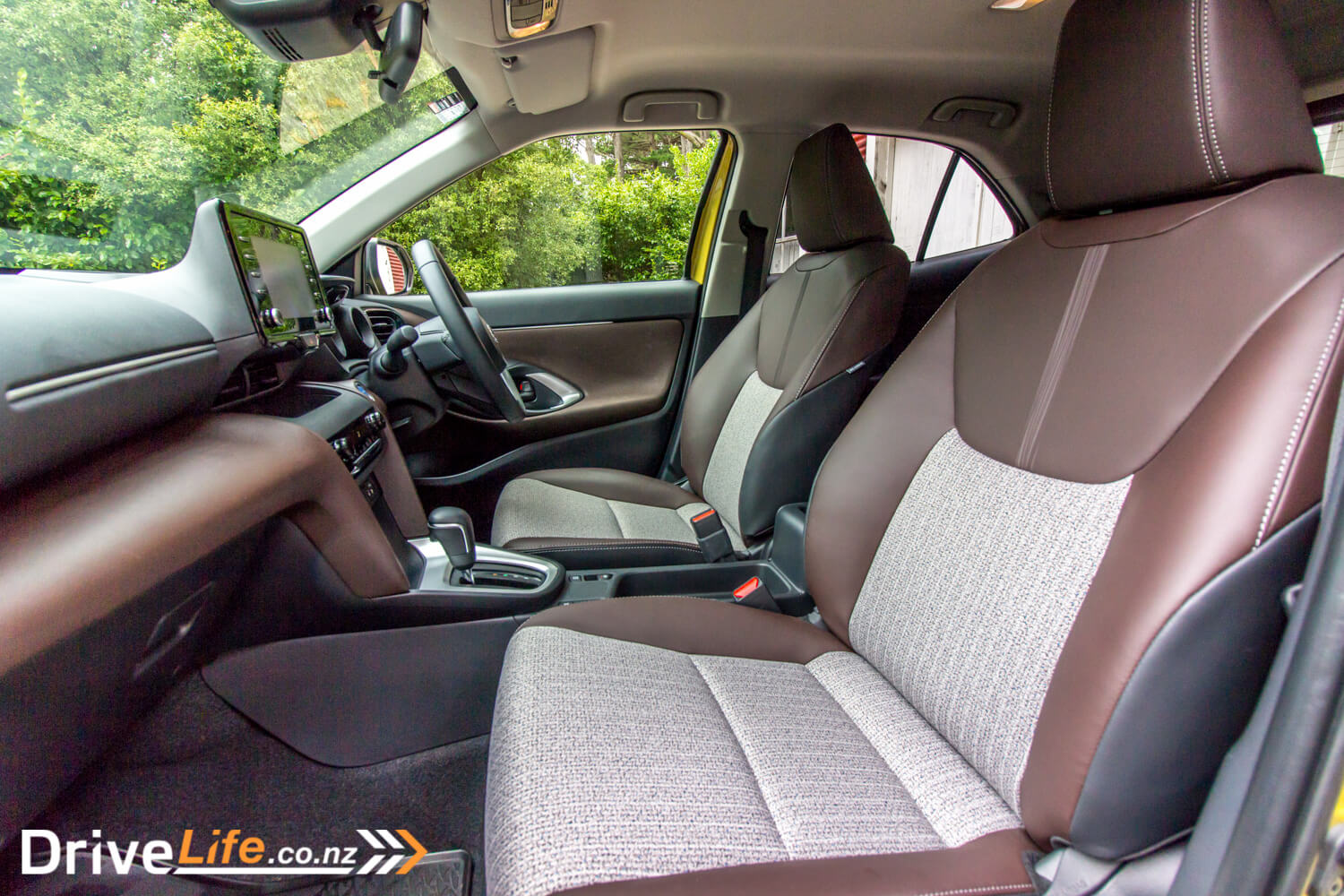
The differences between the hatch and Cross are apparent on the inside of the car too, surprisingly. While the hatch has a standard, old school handbrake, the Cross has an electric park brake.
Of course, this being a Toyota hybrid, there’s the switch for EV mode down on the centre console in the same place as the hatch. Right up front are two USB ports – one for playing music and charging your phone, and another 2.1-amp USB port, so this should charge a tablet.
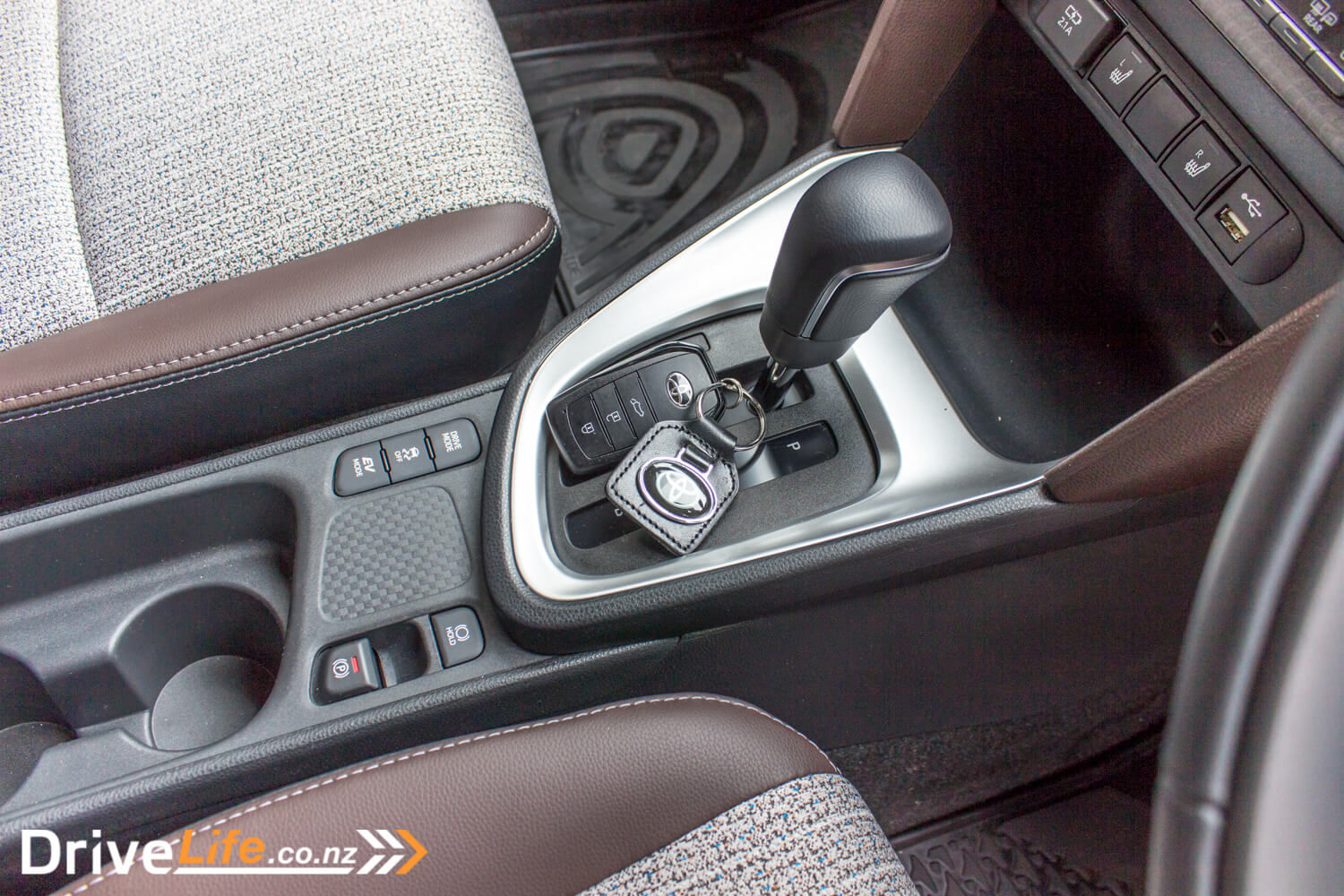
Good to see heated seats in this top-spec model, but weirdly they only have two settings – on, or off. I haven’t seen this for decades, so not sure why Toyota did not put in a multi-level seat heater. Still, heated seats are always appreciated and it’s more fuel efficient to use these than turn on the AC.
As a token to being an SUV, the Yaris Cross has rubber floor mats. No fancy carpet mats here, all very utilitarian and I’ve got to say, functional too. While it was hot and dry during our week of testing, I can imagine these are a far better option in the wetter weather.
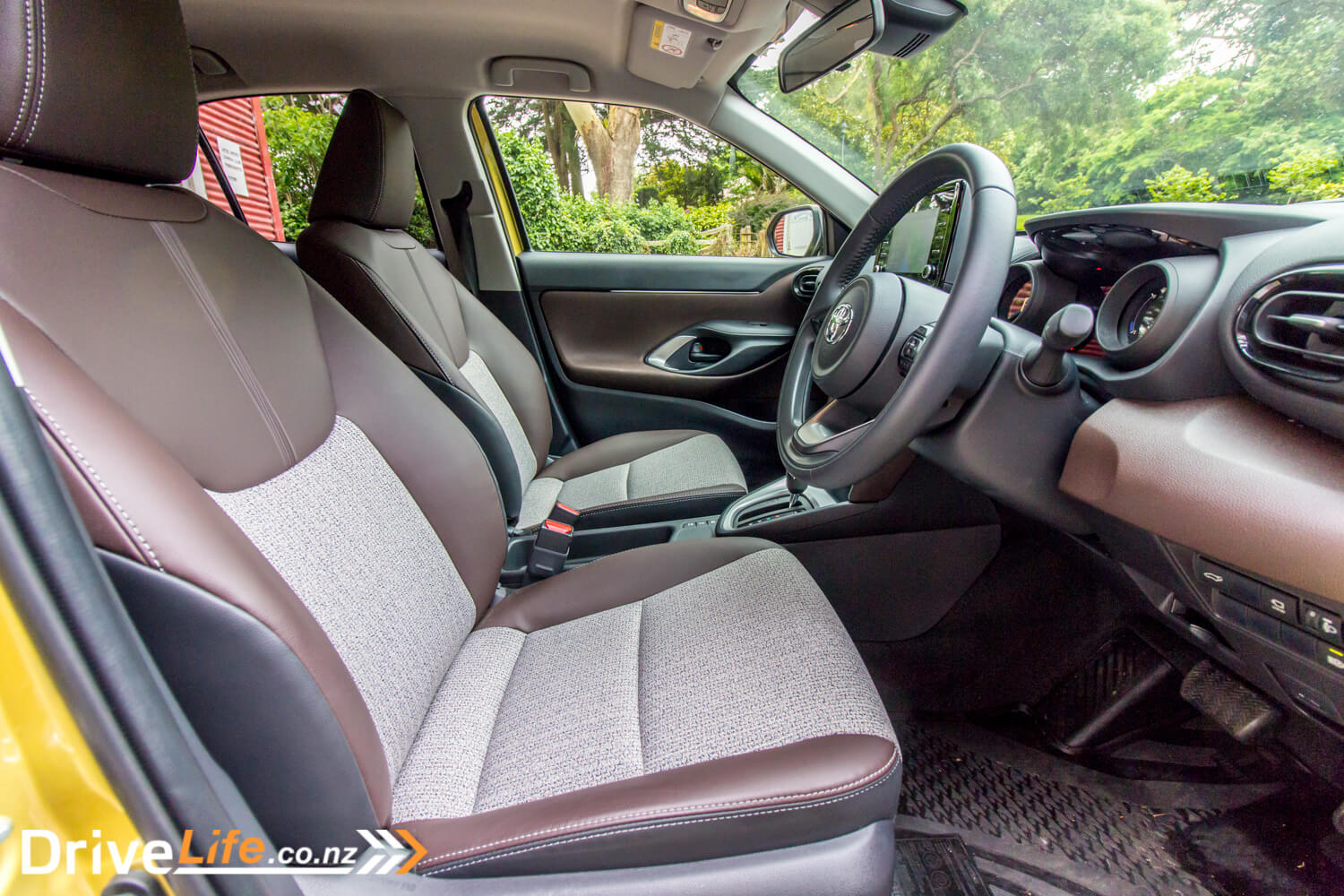
Rear legroom in this car is around the same as the Yaris Hatch, so a little cramped but usable for short trips. Like the hatch, the rear doors don’t really open wide enough so it can be a bit tricky climbing in the back if you are on the larger side. There are no USB or 12-volt ports for your rear passengers in this car.
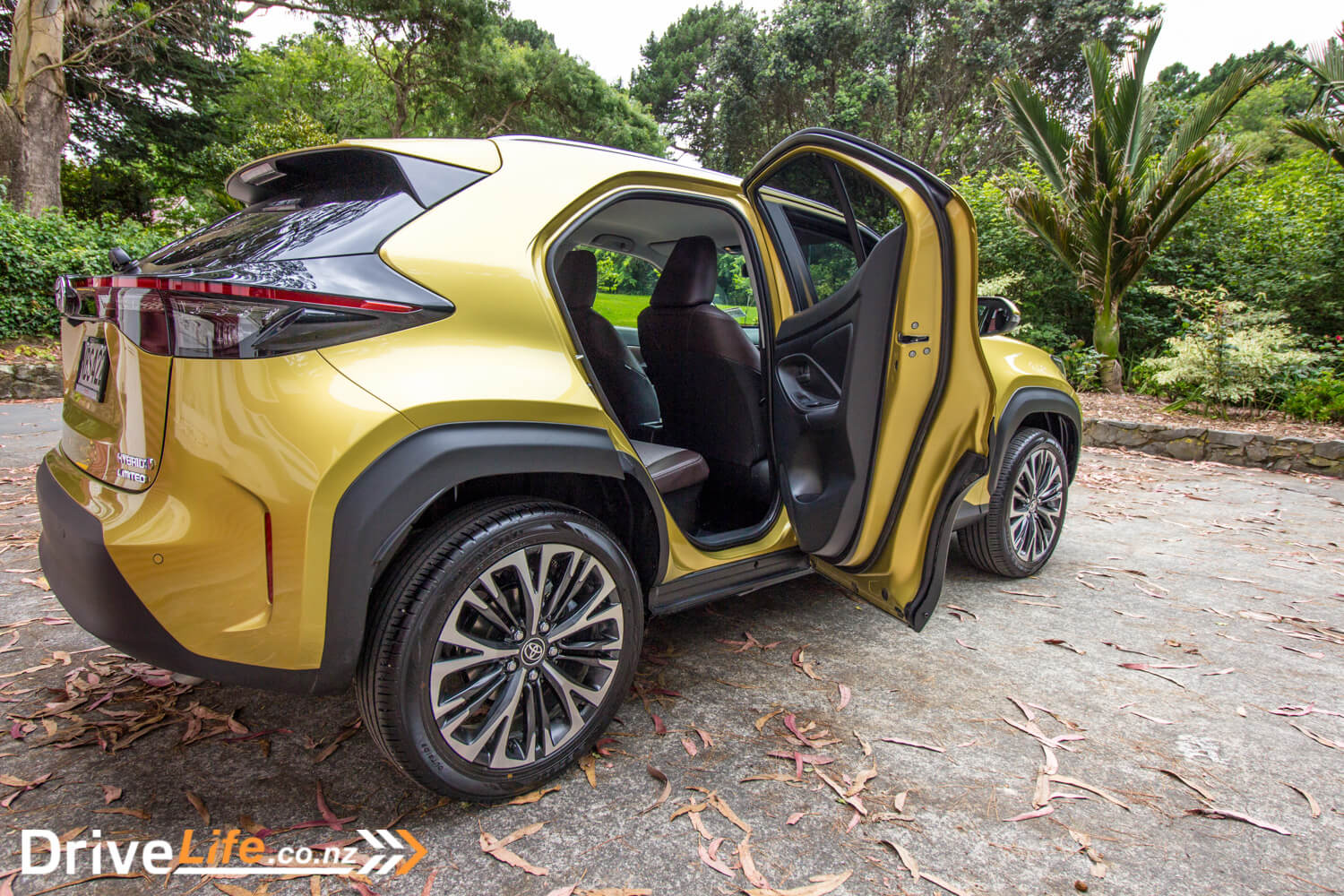
Headroom in the rear is certainly more than the hatch; it’s not going to be pleasant for any basketball players, but the difference over the hatch is marked.
The boot has 390 litres, so over 100 litres more than the hatch. It also has the same split-level floor, so you can take the false floor out to store taller items.
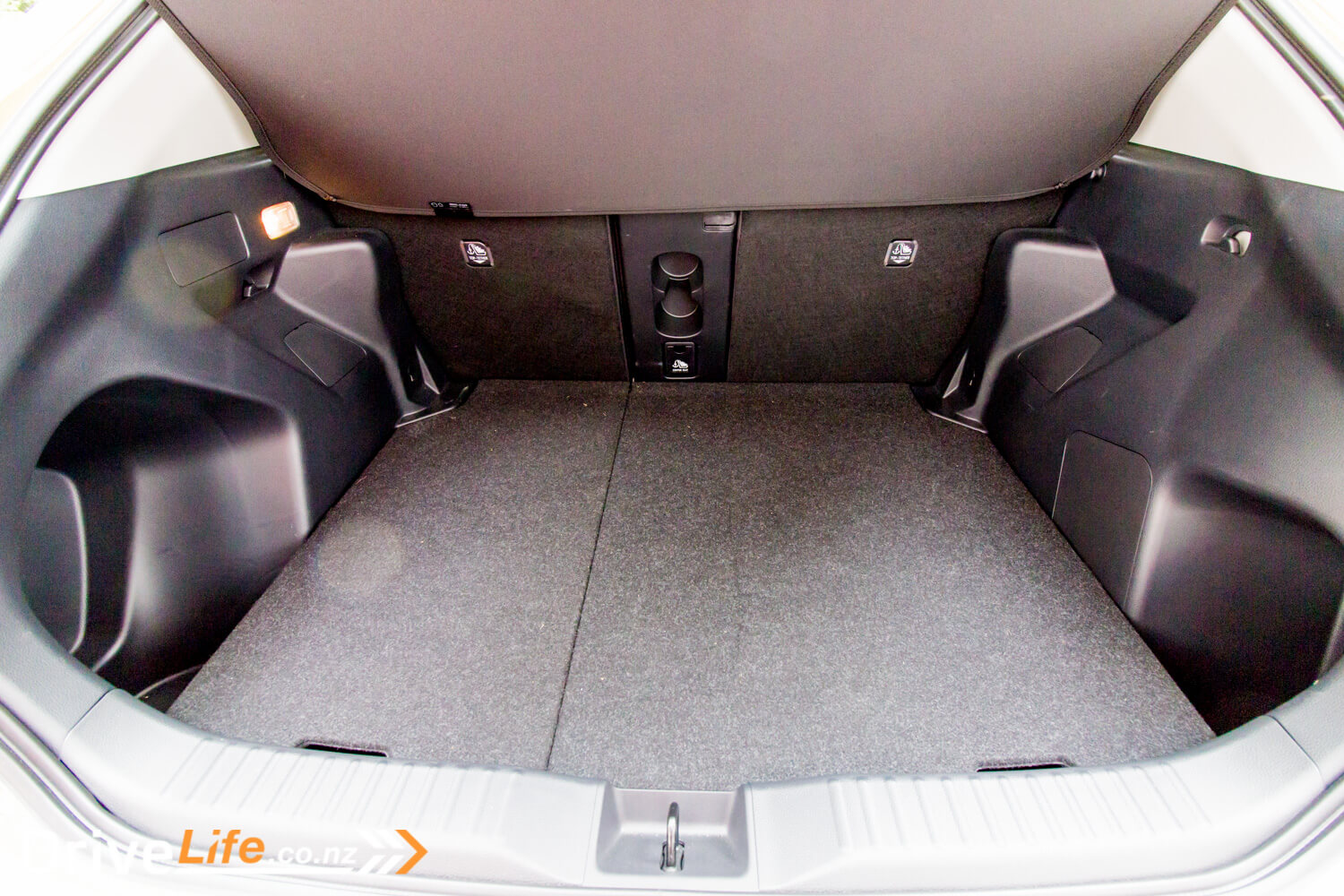
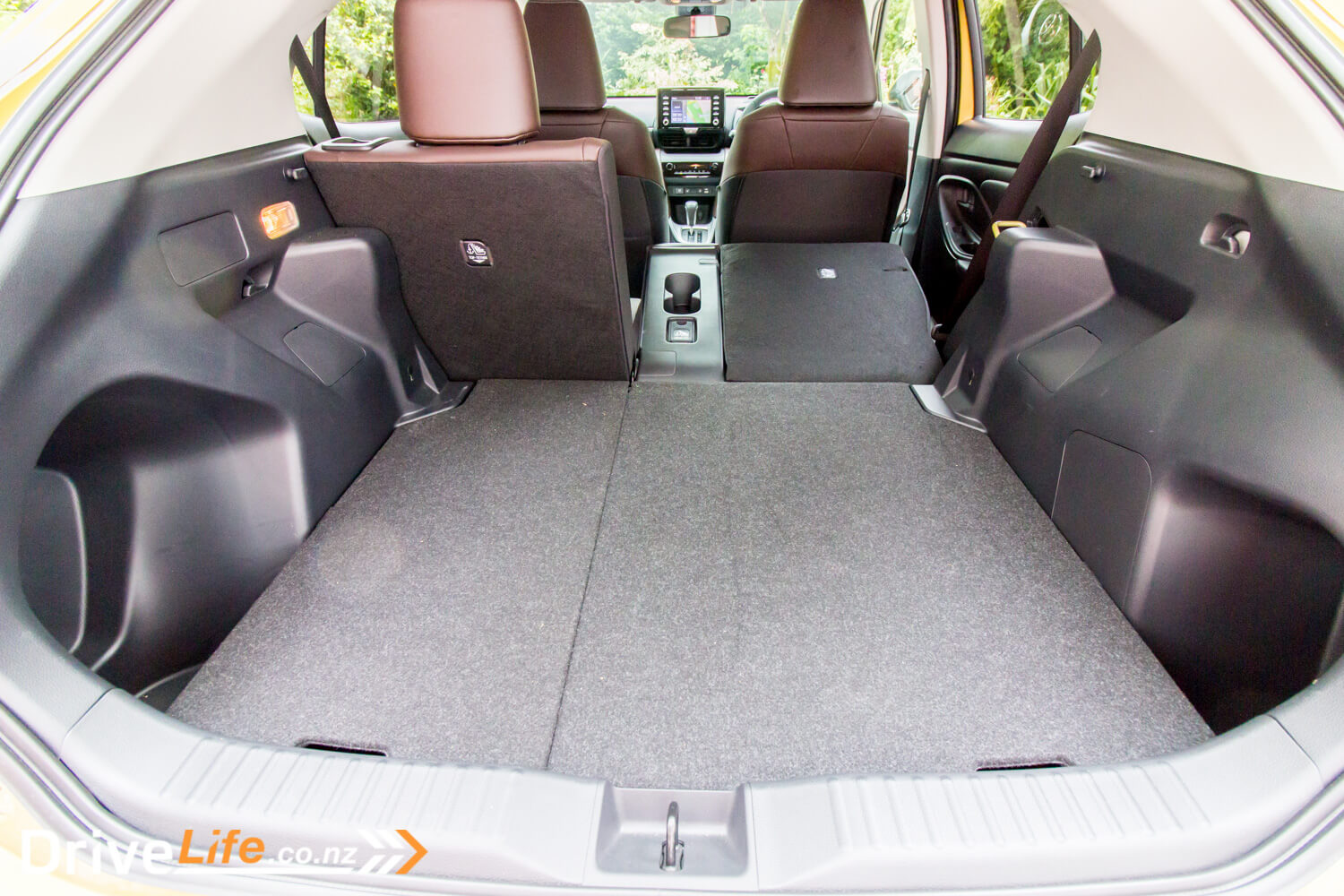

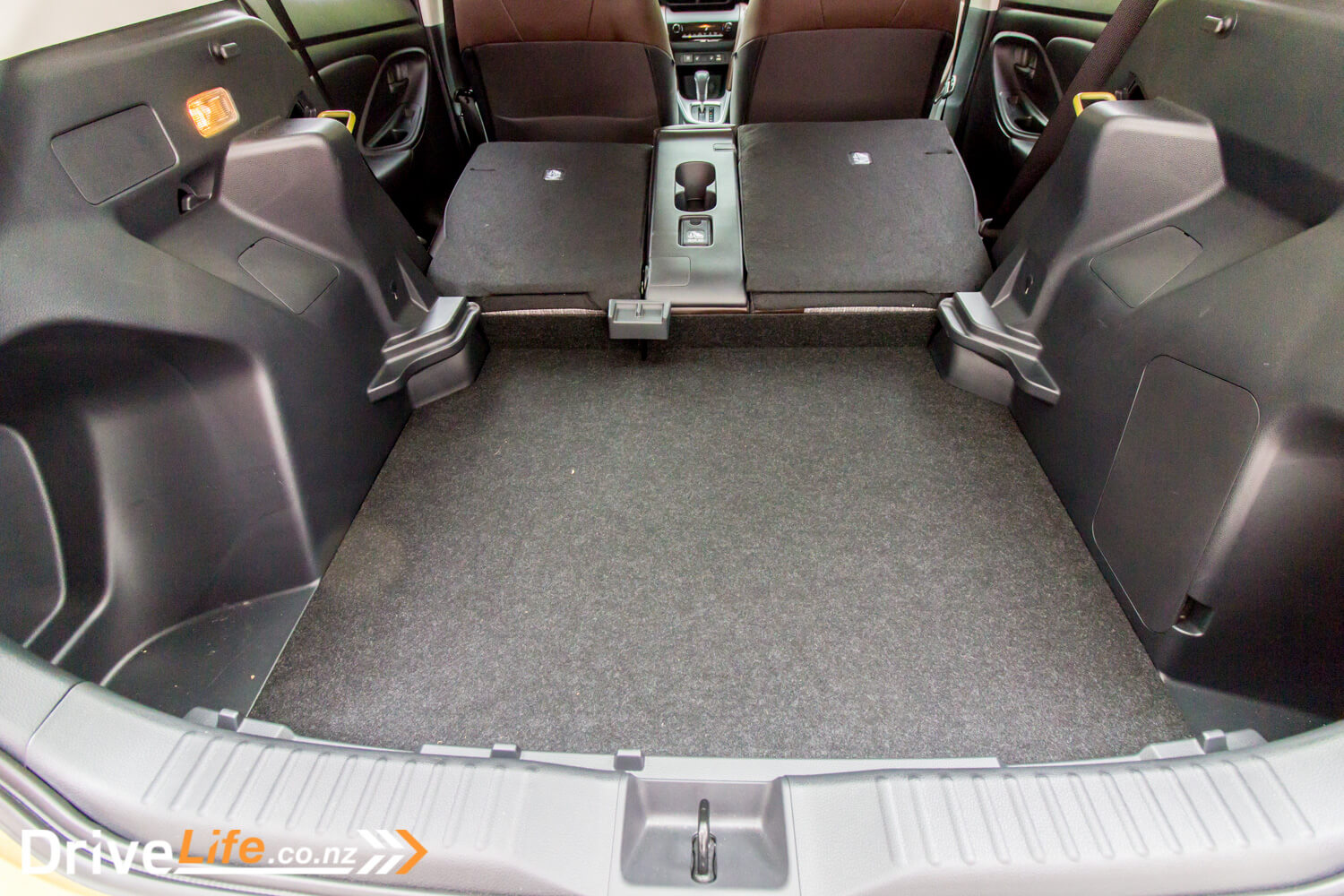
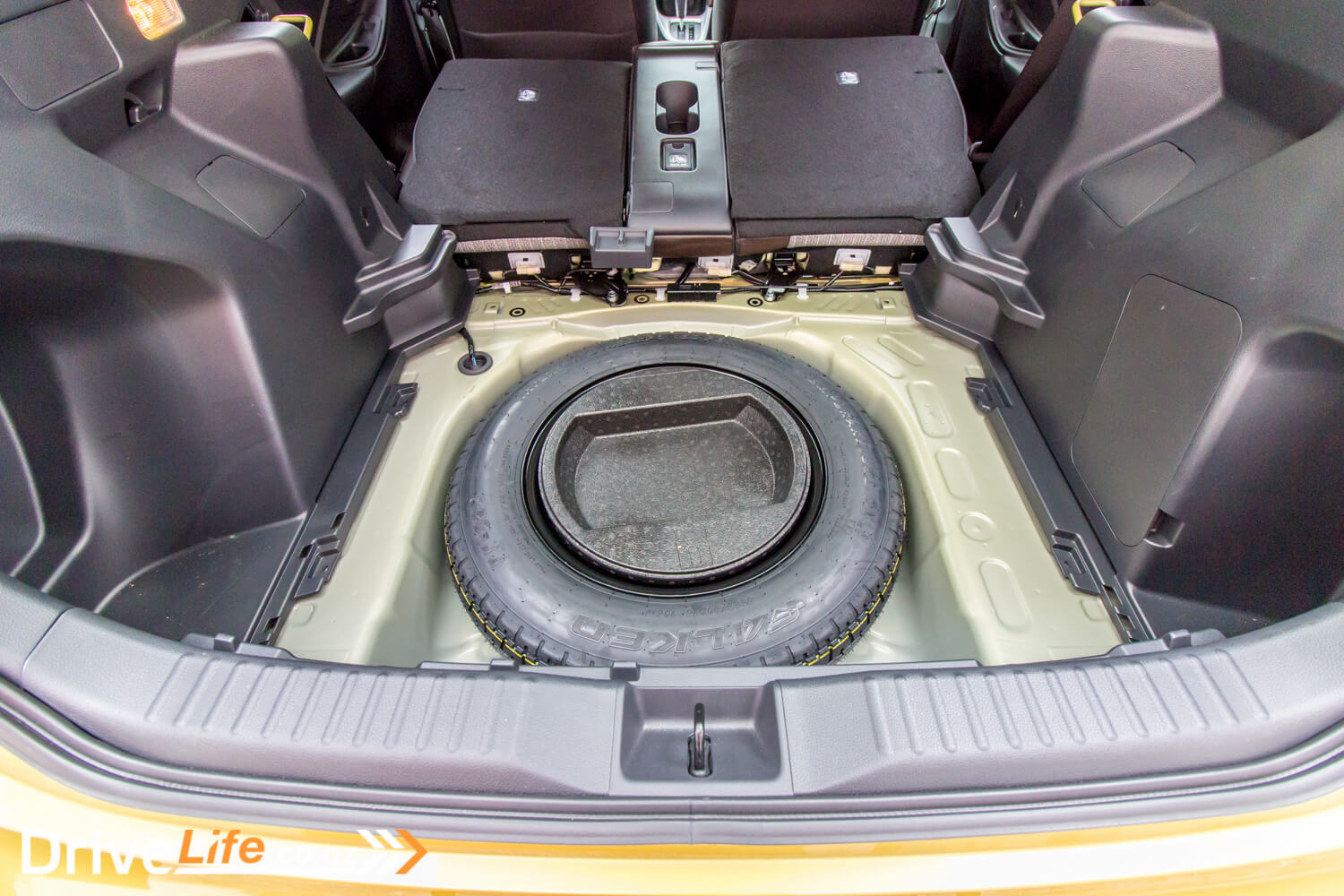
What Does The 2020 Toyota Yaris Cross Limited Hybrid Drive Like?
It’s all very déjà vu for this car. I’d just stepped out of the petrol Yaris Hatch so stepping into the Hybrid Cross was a perfect way to compare them. First impressions? The engine is still noisy. Sorry Toyota, I know I mentioned this in the hatch review, but other than when the car is running in EV mode, the engine is no quieter in the hybrid. It’s interesting to me at least, that this is an all-new engine, and yet it can be so noisy and unrefined. I’m sure in Auckland or Christchurch the engine noise isn’t as prevalent, but in Wellington with its endless hills, the engine can be a bit too much.
It’s not that smooth either, with a bit of a kick in the changeover from EV mode into hybrid mode. On the plus side, compared to the Swift Hybrid, you can actually get the Cross Hybrid to run in EV mode a reasonable amount of the time. That brings me to the title of this review; I decided from the outset of picking this car up, that I’d drive it as economically as I could, with a target of getting to Toyota’s claimed fuel consumption of 3.8L/100Km. That meant no aircon unless I was dying, and I ran the car in Eco mode for the entire week and a half.
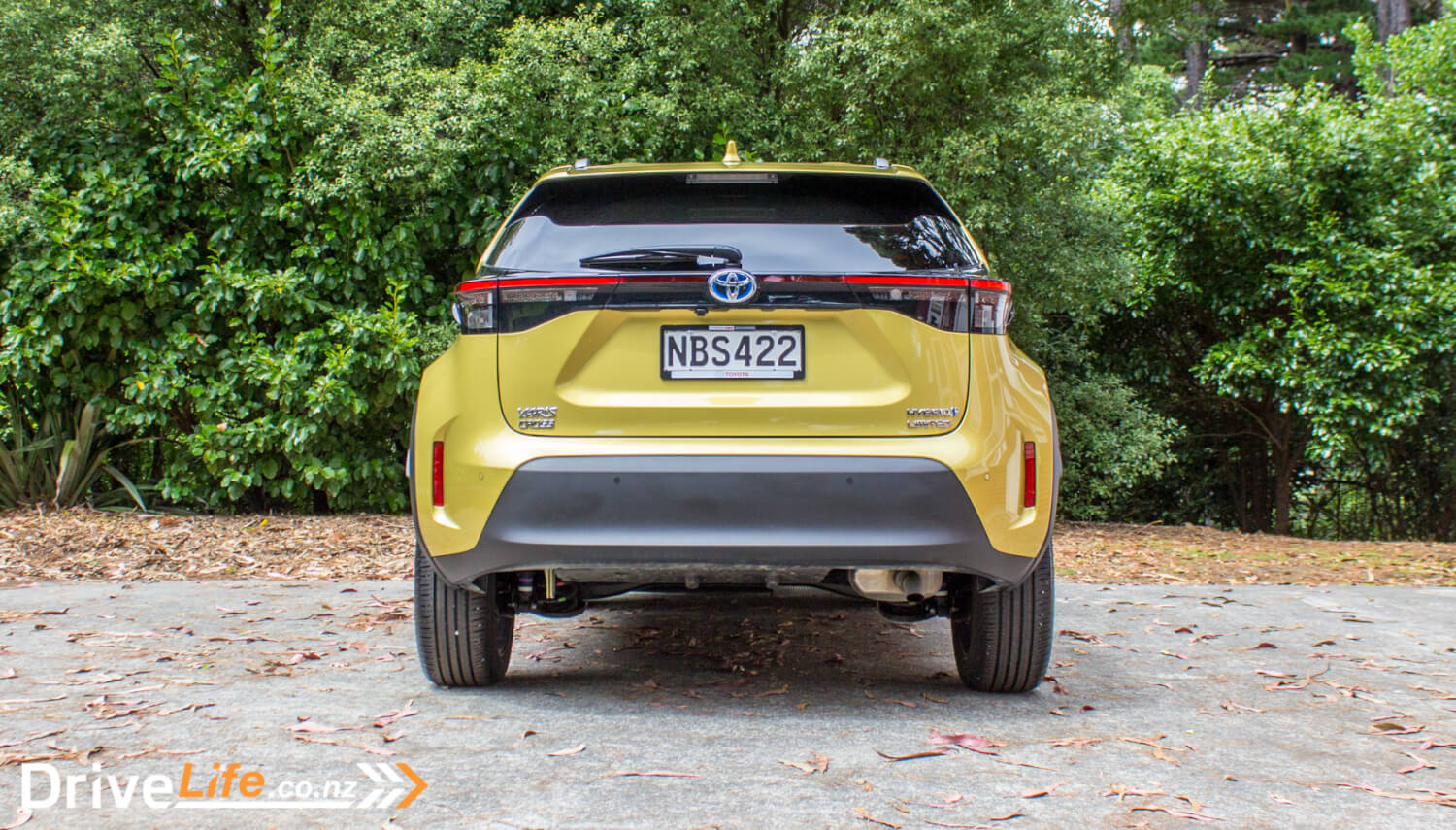
Some of you may remember I did this a few years ago with the Lexus CT200F, and I failed. That hybrid was supposed to do 4.1L/100Km and even with me trying so hard, I only got to 4.9 L/100Km. When Kate had the Yaris Hatch Hybrid, she managed 4.0L/100Km, so I felt confident I could at least match Toyota’s number. The challenge was on, and I’ll reveal the results at the end of this review.
One thing that did make this challenge a bit easier was the drive modes in this car; There’s three of them; Eco, Normal and Power. Like the Yaris Hatch, Power just makes more engine noise. Sure, you get some more instant performance, but the noise is too much. But the good thing here is that the Yaris Cross is one of the few cars that actually keeps the drive mode you’ve selected, when you exit the car. So you get back in and ‘start’ it, and the car goes back to whatever mode you had it on. There are very few brands that do this, so hats off to Toyota for that one.

One noticeable bonus over the non-hybrid Yaris was Eco mode; In the petrol version, Eco mode was too lethargic and almost unusable. In the hybrid with the extra oomph of the hybrid system, it was a breeze.
The other thing helping my challenge is that when you drive with maximum anticipation of what’s happening around you, it’s easy to stay off the brake pedal, saving gas or at least keeping the car in EV mode. Most New Zealand drivers don’t drive with any sort of anticipation of course, so keeping my eyes peeled on what was happening well ahead of me meant that I could drive as smoothly and as economically as possible. Read on to the end for how I did.
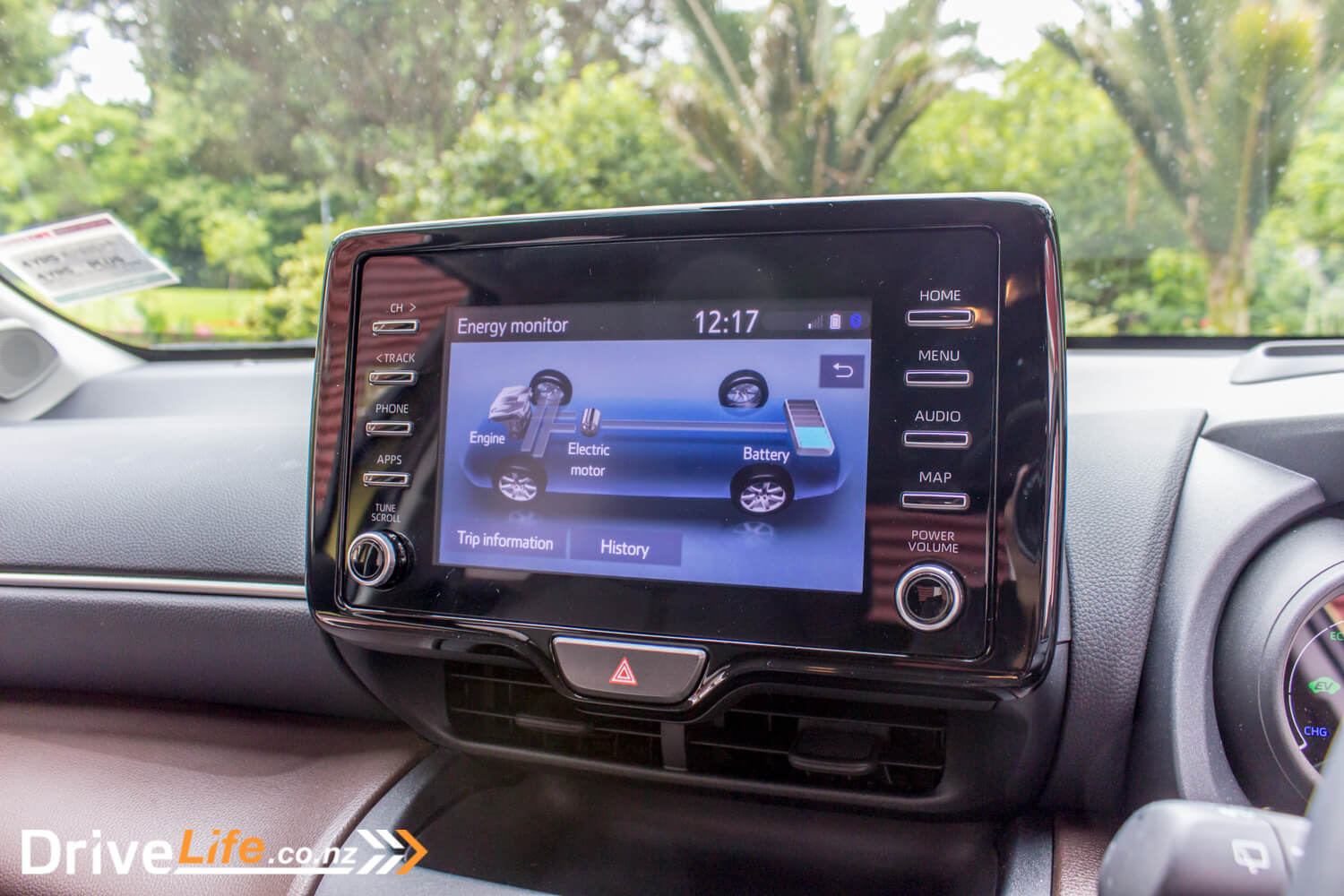
The hybrid system in this car is pretty much the same as a Yaris Hatch Hybrid, or a Prius for that matter. It’s not a PHEV so you can’t plug it in to charge it up (you need the Prius Prime for that), while you are driving the battery is charging. When you are using a smaller amount of gas pedal, the car will go into EV mode if it can, meaning silent and free driving. Push the pedal down too hard and the engine will start, and the engine starts automatically when the car is cold, then will turn off (if it can) once warmed up.
There is a ‘B’ mode for the car, and this is engaged by pulling the gear lever all the way down. This gives you more engine braking down a hill, but surprisingly doesn’t seem to do any sort of regeneration into your batteries, it actually starts the engine up. The weird thing is, if you have the display up showing what’s happening on the EV/Hybrid side of things, it doesn’t show the engine running in B mode. I didn’t use it much, since I was on my mission of saving as much fuel as I could.
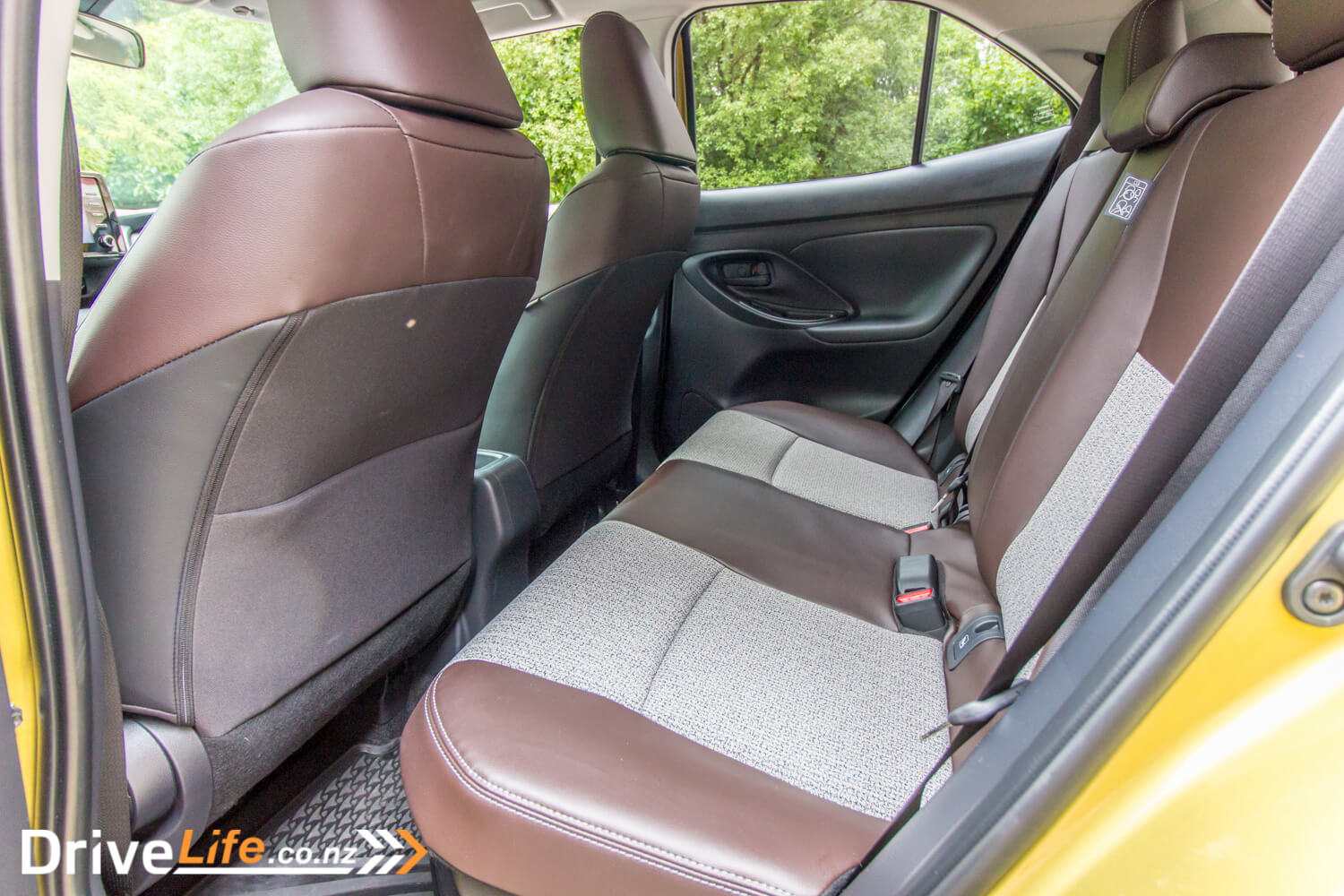
As another point of difference over the hatch version, the top-spec Cross has a 360-degree camera system, that Toyota calls Panoramic View Monitor. It’s a huge benefit to have this, and you can set it to automatic so that as soon as you start driving slowly, the birds’-eye view of the car pops up on the centre screen. Having it on automatic can be a pain around town as you pull up to the lights, and you don’t want/need the camera on like this, but I preferred this over having to turn it on manually, since the button for this was on the right-hand side of the steering wheel, way down low and hard to see in a hurry when you need it. This was a bit strange, as there’s two switch blanks right there on the dash next to the heated seat switches, so one of these could have been used.
The quality of the image isn’t the best either, the whole infotainment system is looking pretty dated and chunky. It’s great that Toyota has included Apple CarPlay and Android Auto but I wish they’d upgrade this screen for something a lot higher def. At least it’s quick, with almost no pause between screens.
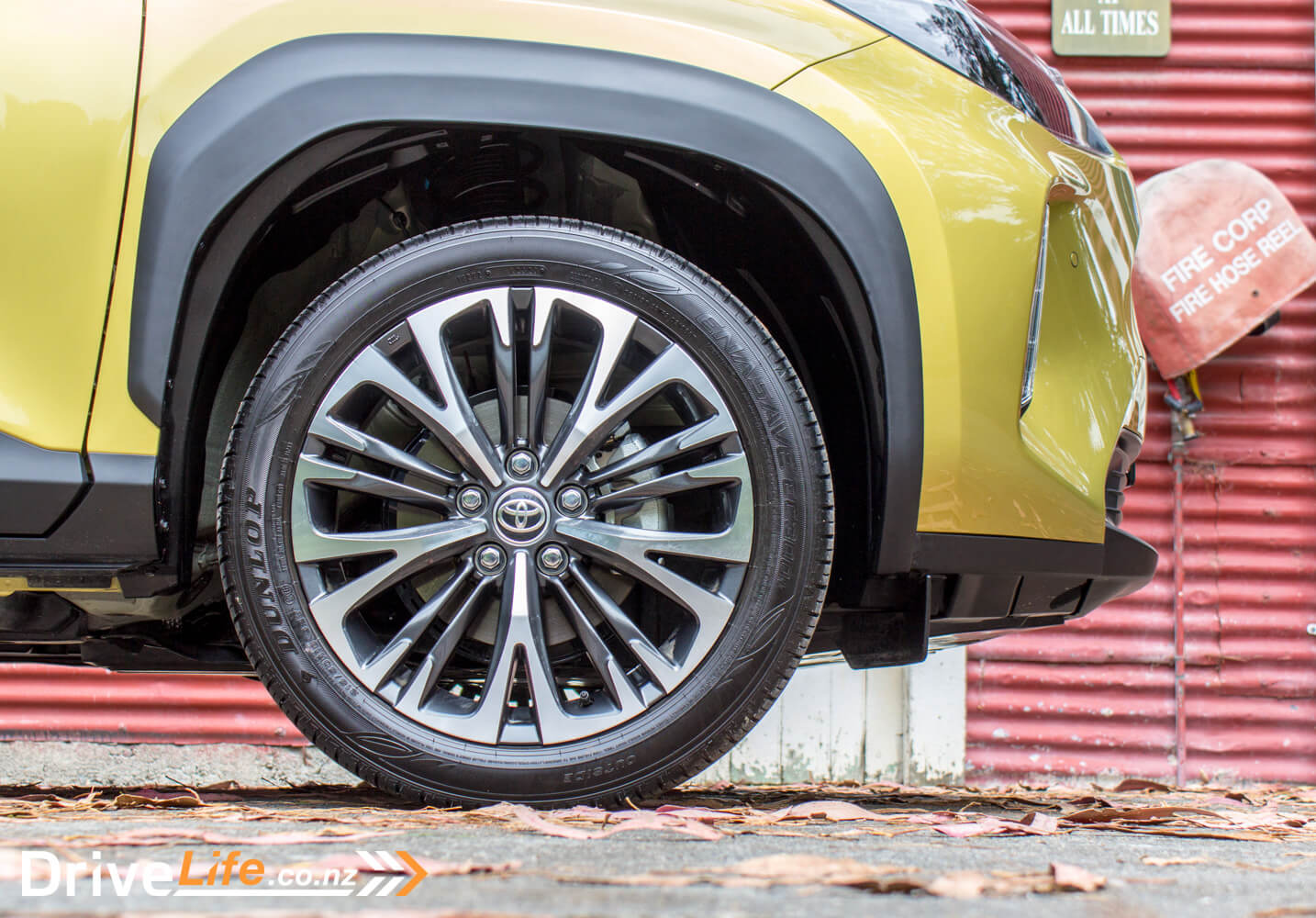
Visibility on your Daily Drive is an improvement over the hatch, since those rear doors are bigger and the rear windows bigger too. It’s still got that massive C pillar, but there is blind spot monitoring to help you out. Still on the Daily Drive, you get Lane Keep Assist as standard, so if you veer out of your lane, the car will beep at you. Like the hatch, there’s lots of beeping with the Cross. There’s also Lane Centring, which will attempt to keep you in the middle of your lane. It’s mostly successful, but can be a bit over eager, sometimes making me fight it to keep it where I want it to go. I did turn this off and on as needed, which is simply done by a button right there on the steering wheel. Lane Centring is handy on the motorway, which is where it seems to work the best.
SatNav is standard in this model, along with SUNA traffic alerts. As more and more people are heading back to work during my time with the car, SUNA was invaluable in keeping me up to date with any crashes and road works.
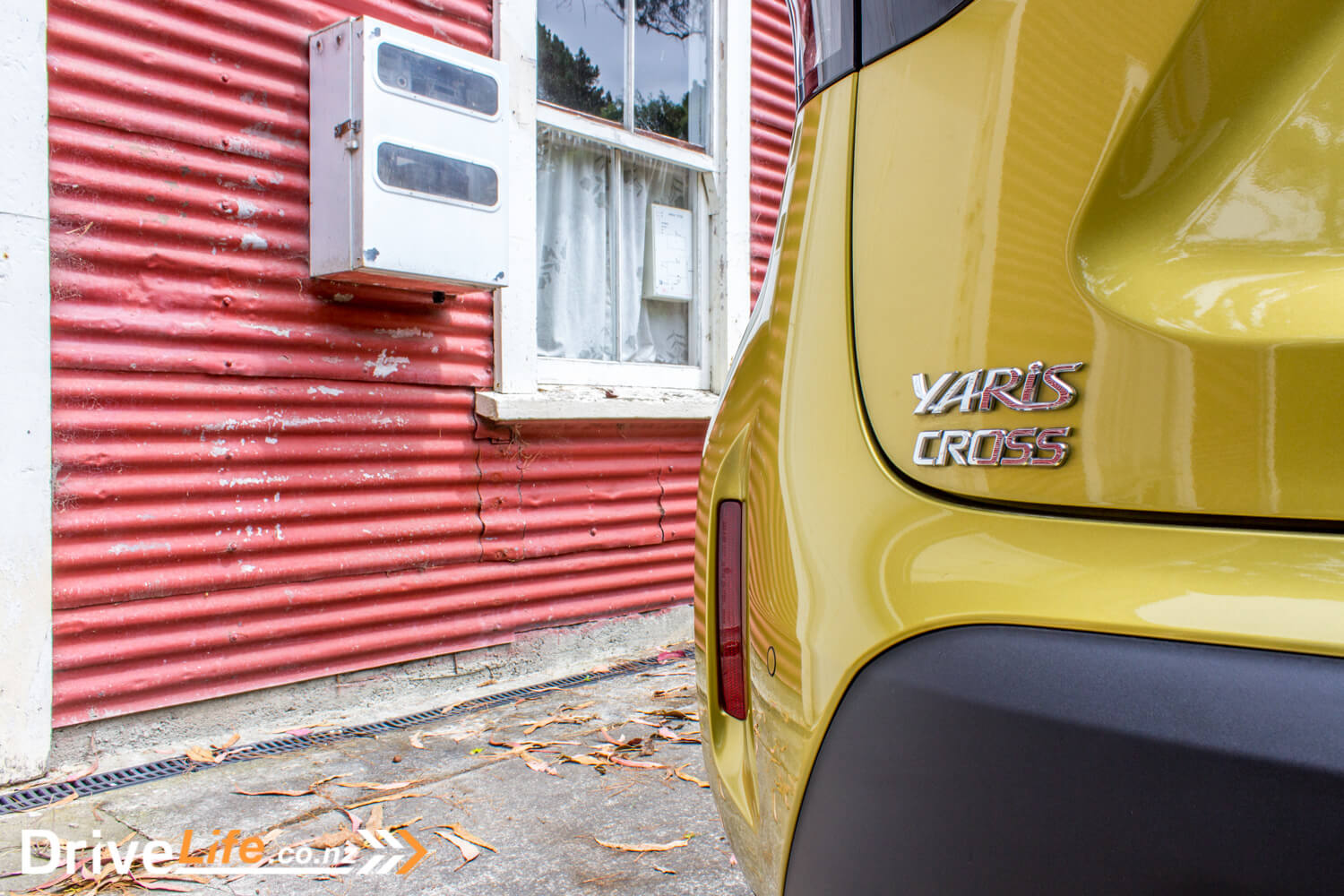
Another difference I found between this car and the hatch, is the adaptive cruise control; in the hatchback, it doesn’t bring you to a stop but instead turns itself off at around 25km/h. This means you can’t use it in a traffic jam, which is one of the biggest benefits of adaptive cruise. However, in the Cross it does bring you to a stop. Go figure that one out. It works well too, and once the lights have turned green, a prod of the gas pedal will turn adaptive cruise back on again. For me, this was one of the biggest failings of the hatchback, it makes the Cross model just that much more attractive.
Another handy part of the adaptive cruise control is that using traffic sign recognition, if the speed limit changes and you are using adaptive cruise, you can hold the ‘Resume’ button up, and it will reset cruise control to the new speed limit. We’re seeing this feature more and more now, and it’s a welcome one.
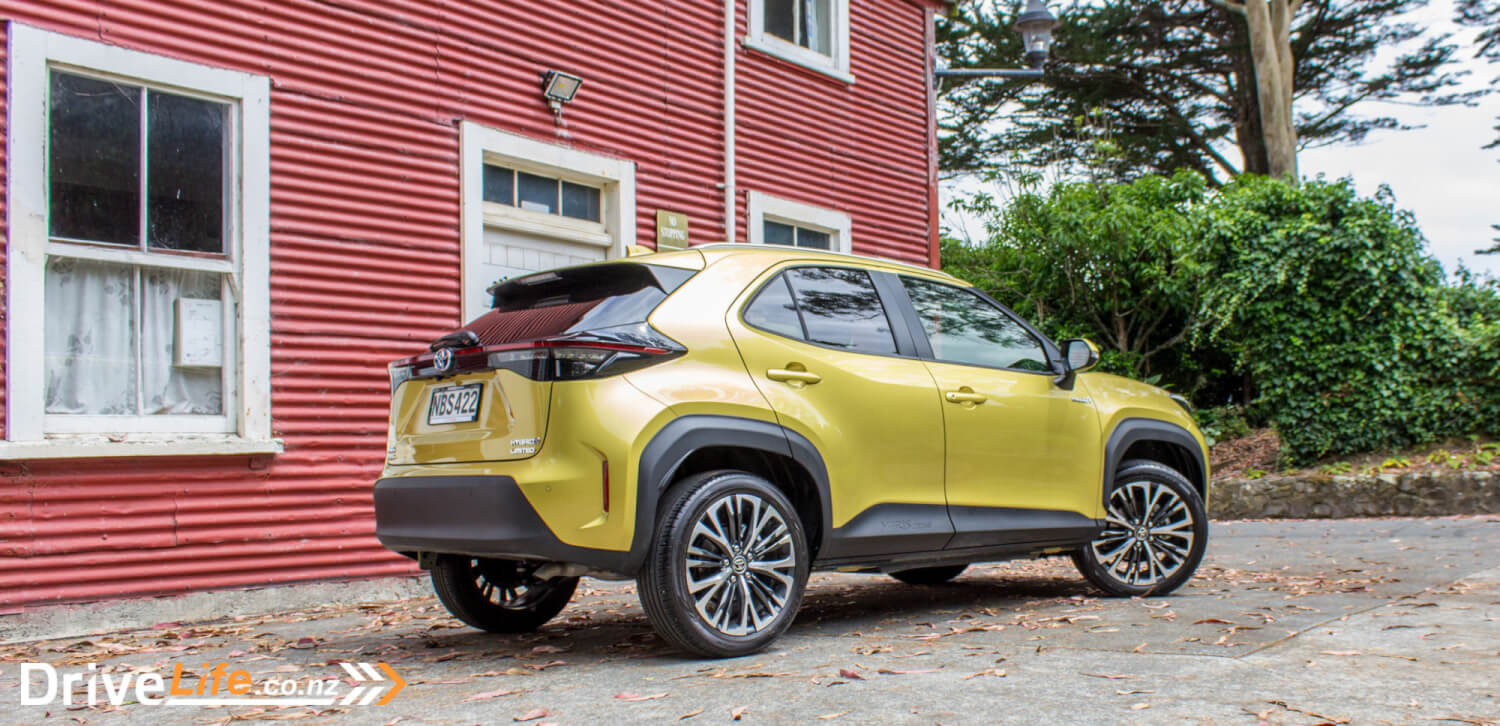
Like the hatch, the Cross has the same heads-up display (HUD) system, and it is excellent. Your speed, the current speed (which changes to red if you exceed it), charging status, SatNav directions, adaptive cruise info, audio tracks – it’s all there, right on the windscreen.
In the hatch review, I mentioned how I took the car on a twisty road to test out the handling, and came away very impressed. The chassis on the hatch is superb. The Cross model isn’t quite as good – you can definitely feel it rolling more, with that higher body. But still, it’s better than most people will need, and the steering is still top notch.
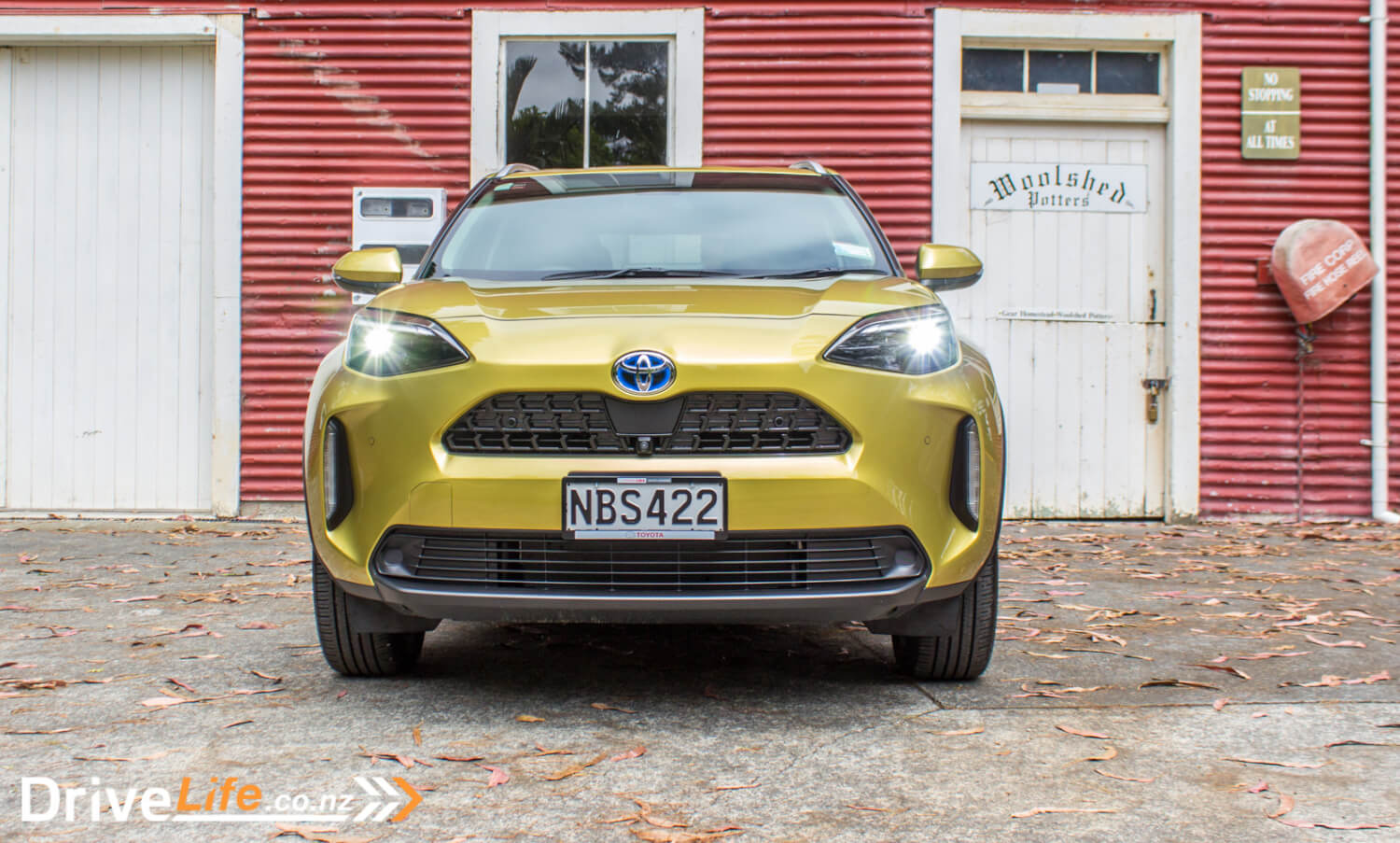
The brakes didn’t feel as good as the hatch. On the move, the pedal can feel a bit spongy, and when at a stop, I can press the pedal all the way to the floor. It doesn’t inspire confidence. In saying that the brakes worked just fine, but the pedal feel needs work. While the Cross has an electric park brake with auto hold functionality, the auto hold needs to be turned on every time you start the car. Euro brands have it all over the Japanese and Korean brands in this regard.
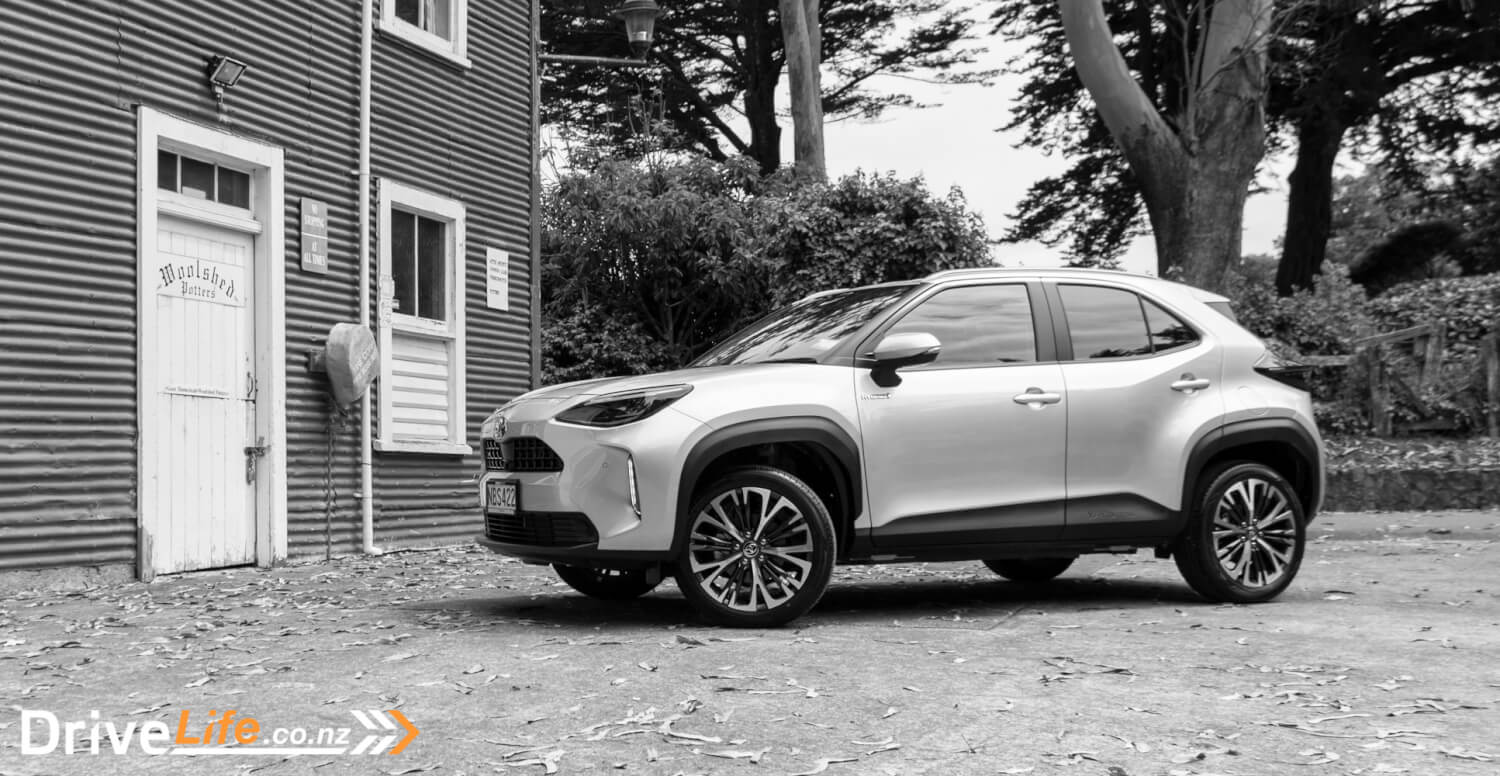
For those who don’t know, brake auto hold is one of those safety features that when used, is brilliant. It means at any point when you come to a stop (e.g. stop sign, red light) you simply press a bit harder on the brake pedal, and a ‘hold’ light will come up on the dash. All four brakes on the car are now locked on, meaning if you were shunted from behind, there’s no danger in you accidentally releasing your foot from the brake pedal. It’s a great safety feature, and an underrated one at that. All cars with electric park brakes should have this.
So, was my mission accomplished? Did I reach the magical number of 3.8L/100Km? Not quite. Over 600Km, I managed 4.0L/100Km. Now that’s pretty close and I was happy with that number – 4.0 is a great result. That was, until I reread Kate’s review where she also got 4.0L/100Km and didn’t even try hard. So – I spent over a week in a hot car, feathering the throttle in Eco mode for no extra benefit. I think that shows that in Wellington at least, 4.0L/100Km is pretty much the best you will get out of a Yaris Cross Hybrid.
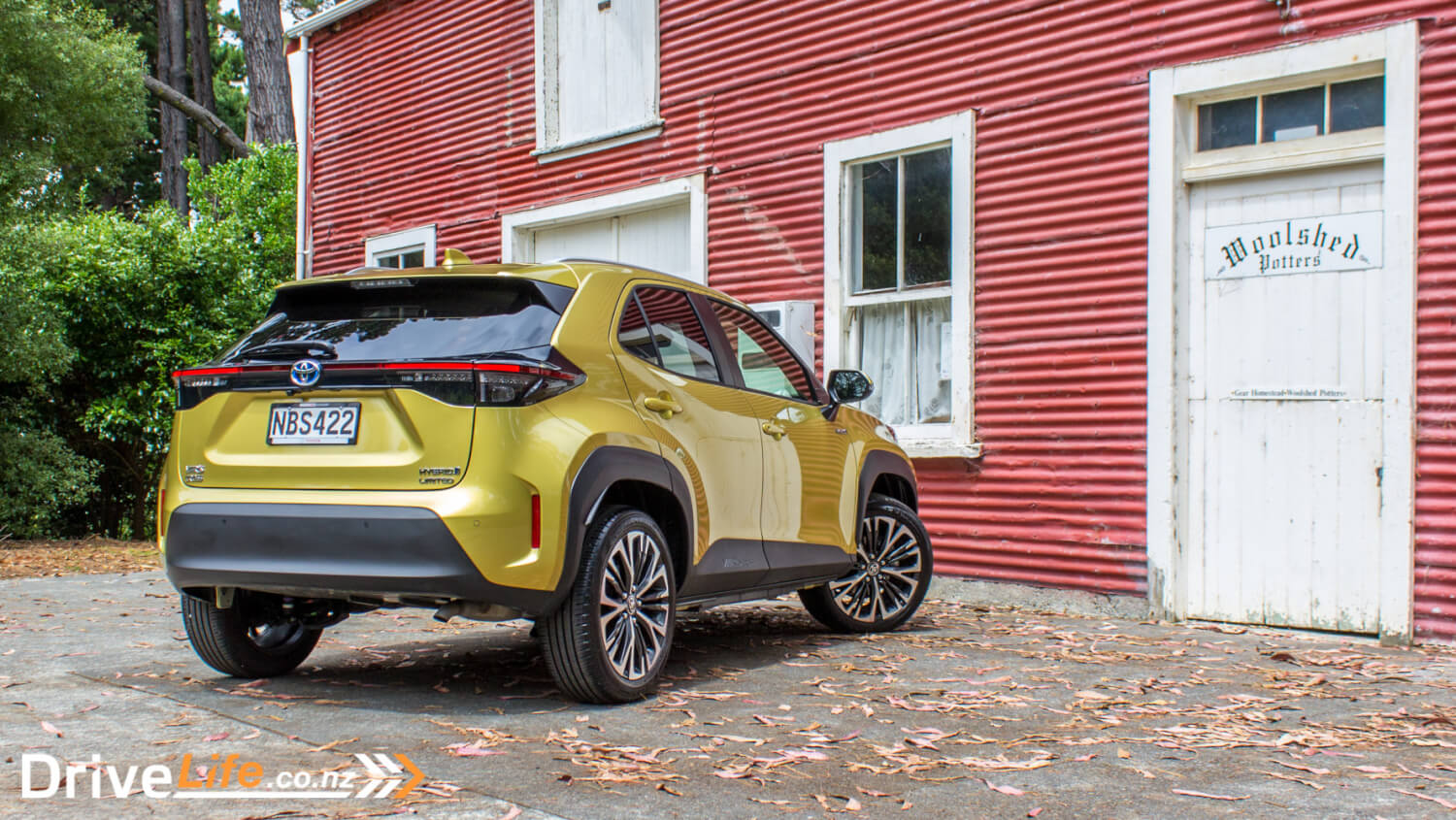
What’s The Competition For The 2020 Toyota Yaris Cross Limited Hybrid?
All listed below are front-wheel drive.
| Brand/Model | Engine | Power/Torque kW/Nm | Seats | Cargo capacity, litres | Fuel L/100km | Price |
| Nissan Juke Turbo Ti | 1.0-litre, 3-cylinder turbo petrol | 84/180 | 5 | 422 | 5.8 | $44,990 |
| Kia Niro SX Hybrid | 1.6-litre, 4-cylinder petrol/hybrid | 77/147 | 5 | 401 | 3.8 | $44,490 |
| Honda HR-V Sport NT | 1.8-litre, 4-cylinder petrol | 105/172 | 5 | 437 | 6.9 | $41,990 |
| Mazda CX-3 Takami | 2.0-litre, 4-cylinder petrol | 110/195 | 5 | 264 | 6.3 | $41,695 |
| Mitsubishi ASX VRX | 2.4-litre, 4-cylinder petrol | 125/226 | 5 | 393 | 7.9 | $41,090 |
| Toyota Yaris Cross Limited Hybrid | 1.5-litre, 3-cylinder petrol/hybrid | 68/120 | 5 | 390 | 3.8 | $38,990 |
| Ford Puma ST Line | 1.0-litre, 3-cylinder turbo petrol | 92/170 | 5 | 410 | 5.3 | $37,990 |
| Suzuki S-Cross Prestige | 1.4-litre, 4-cylinder turbo petrol | 103/230 | 5 | 440 | 5.9 | $33,990 |
| Hyundai Venue Elite | 1.6-litre, 4-cylinder petrol | 90/151 | 5 | 355 | 7.2 | $33,990 |
| Renault Duster | 1.6-litre, 4-cylinder petrol | 84/156 | 5 | 445 | 6.9 | $29,990 |
What’s The Pros and Cons For The 2020 Toyota Yaris Cross Limited Hybrid?
| Pros Great standard safety features Adaptive cruise control StylingHandling/steering/braking Multi-level boot Superb ride Tight turning circle Fuel Economy | Cons Noisy engine Adaptive cruise control functionality Can feel a little claustrophobic Brown-only interior |
2020 Toyota Yaris Cross Limited Hybrid – Specifications
| Vehicle Type | 5-door, small crossover SUV |
| Starting Price | $38,990 |
| Price as Tested | $38,990 |
| Engine | 1.5-litre, 3 cylinder, M15A-FXE, petrol engine |
| Power, Torque kW/Nm | 68@5,500rpm/120Nm@3,800rpm Combined output with hybrid system 85kW |
| Transmission | E-CVT |
| Spare Wheel | Space saver |
| Kerb Weight, Kg | 1,650 |
| Length x Width x Height, mm | 4180x1765x1590 |
| Cargo Capacity, litres | 390/NA |
| Fuel capacity, litres | 36 |
| Fuel Efficiency | Advertised Spec – combined – 3.8L/100km Real World Test – combined – 4.0L/100km Low Usage: 0-6 / Medium Usage 6-12 / High Usage 12+ |
| Towing Capacity Kg, unbraked/braked | 400/400 |
| Turning circle, metres | 10.6 Small: 6-10m / Medium 10-12m / Large 12m+ |
| Warranty | 3 Year, 100,000Km Warranty |
| ANCAP Safety Ratings | 5 Star |
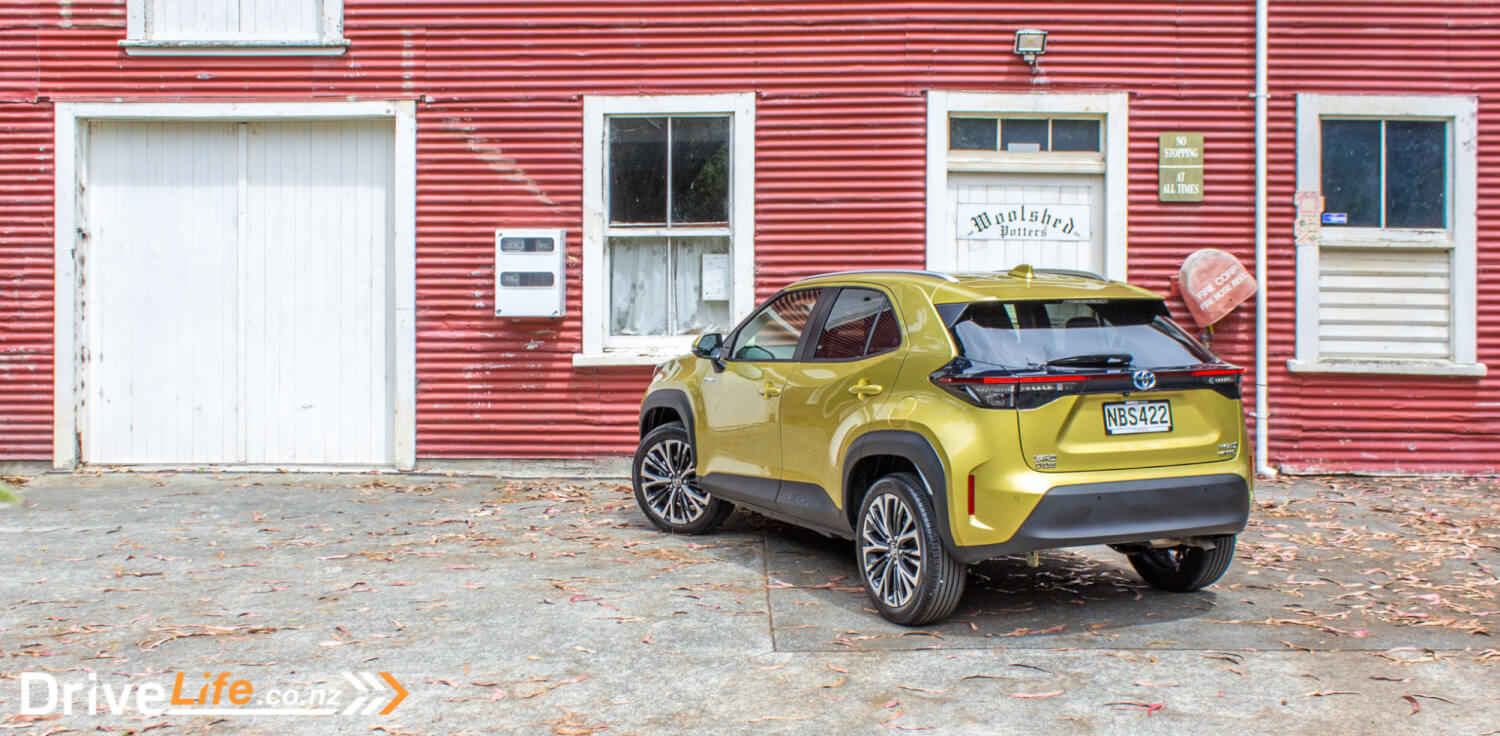


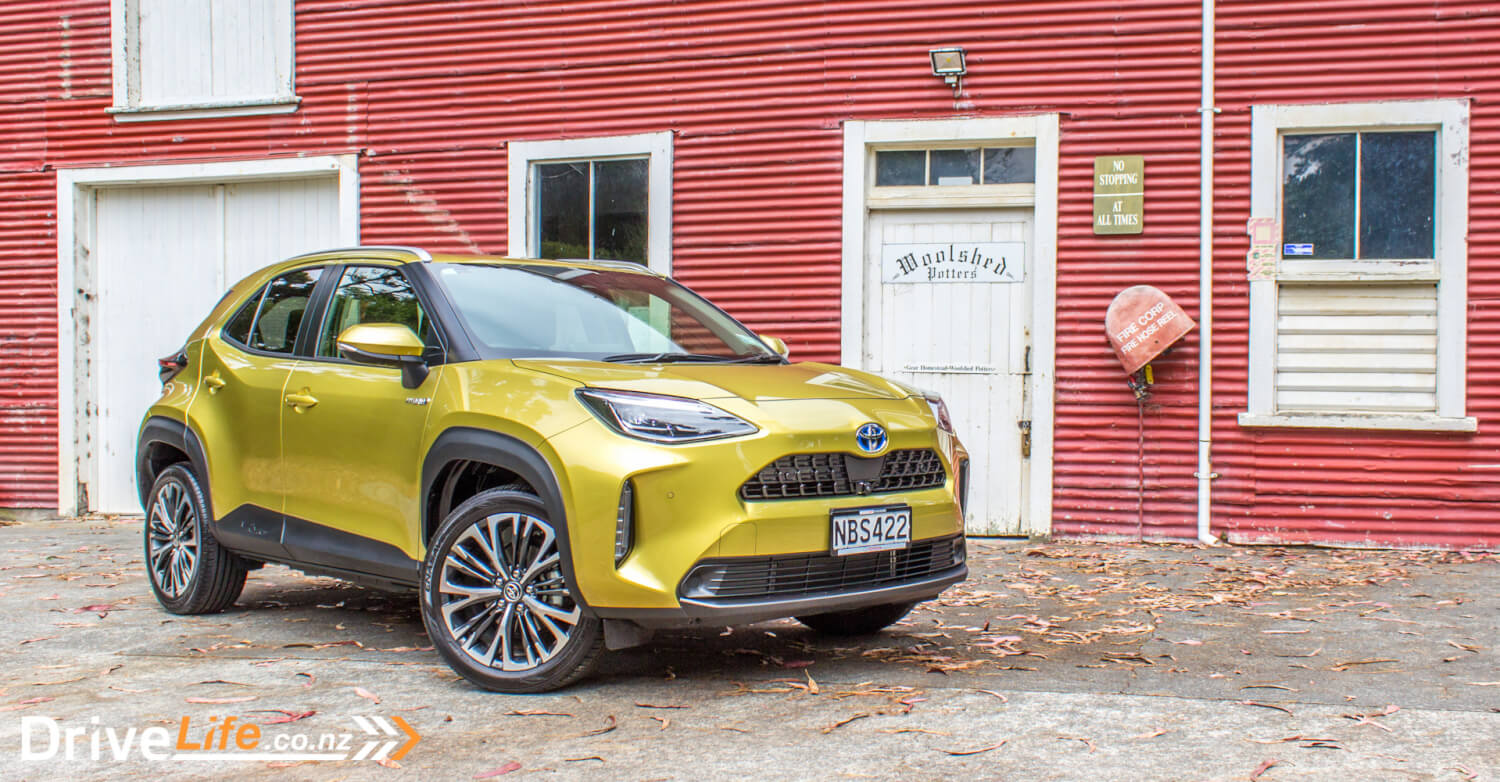






Did you feel the screen was large enough/had sufficient resolution quality to make the 360 camera function useful?
HI Richard
It’s certainly not as clear or as big as some of the screens out there, but having a 360 camera at all is still much better than not.
Cheers
Fred